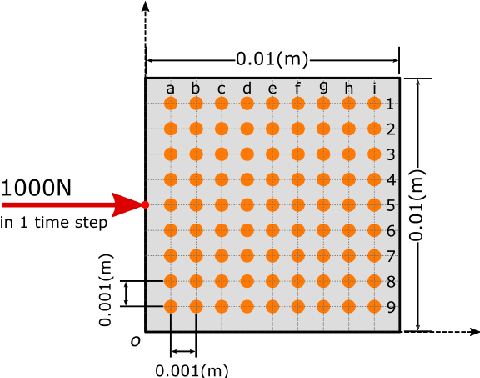Hao Lyu
Analyzable Parameters Dominated Vehicle Platoon Dynamics Modeling and Analysis: A Physics-Encoded Deep Learning Approach
Feb 09, 2025Abstract:Recently, artificial intelligence (AI)-enabled nonlinear vehicle platoon dynamics modeling plays a crucial role in predicting and optimizing the interactions between vehicles. Existing efforts lack the extraction and capture of vehicle behavior interaction features at the platoon scale. More importantly, maintaining high modeling accuracy without losing physical analyzability remains to be solved. To this end, this paper proposes a novel physics-encoded deep learning network, named PeMTFLN, to model the nonlinear vehicle platoon dynamics. Specifically, an analyzable parameters encoded computational graph (APeCG) is designed to guide the platoon to respond to the driving behavior of the lead vehicle while ensuring local stability. Besides, a multi-scale trajectory feature learning network (MTFLN) is constructed to capture platoon following patterns and infer the physical parameters required for APeCG from trajectory data. The human-driven vehicle trajectory datasets (HIGHSIM) were used to train the proposed PeMTFLN. The trajectories prediction experiments show that PeMTFLN exhibits superior compared to the baseline models in terms of predictive accuracy in speed and gap. The stability analysis result shows that the physical parameters in APeCG is able to reproduce the platoon stability in real-world condition. In simulation experiments, PeMTFLN performs low inference error in platoon trajectories generation. Moreover, PeMTFLN also accurately reproduces ground-truth safety statistics. The code of proposed PeMTFLN is open source.
Physics-Informed Neural Networks for High-Frequency and Multi-Scale Problems using Transfer Learning
Jan 15, 2024Abstract:Physics-informed neural network (PINN) is a data-driven solver for partial and ordinary differential equations(ODEs/PDEs). It provides a unified framework to address both forward and inverse problems. However, the complexity of the objective function often leads to training failures. This issue is particularly prominent when solving high-frequency and multi-scale problems. We proposed using transfer learning to boost the robustness and convergence of training PINN, starting training from low-frequency problems and gradually approaching high-frequency problems. Through two case studies, we discovered that transfer learning can effectively train PINN to approximate solutions from low-frequency problems to high-frequency problems without increasing network parameters. Furthermore, it requires fewer data points and less training time. We elaborately described our training strategy, including optimizer selection, and suggested guidelines for using transfer learning to train neural networks for solving more complex problems.
Wave based damage detection in solid structures using artificial neural networks
Mar 30, 2021



Abstract:The identification of structural damages takes a more and more important role within the modern economy, where often the monitoring of an infrastructure is the last approach to keep it under public use. Conventional monitoring methods require specialized engineers and are mainly time consuming. This research paper considers the ability of neural networks to recognize the initial or alteration of structural properties based on the training processes. The presented work here is based on Convolutional Neural Networks (CNN) for wave field pattern recognition, or more specifically the wave field change recognition. The CNN model is used to identify the change within propagating wave fields after a crack initiation within the structure. The paper describes the implemented method and the required training procedure to get a successful crack detection accuracy, where the training data are based on the dynamic lattice model. Although the training of the model is still time consuming, the proposed new method has an enormous potential to become a new crack detection or structural health monitoring approach within the conventional monitoring methods.
Modelling Context with User Embeddings for Sarcasm Detection in Social Media
Jul 05, 2016



Abstract:We introduce a deep neural network for automated sarcasm detection. Recent work has emphasized the need for models to capitalize on contextual features, beyond lexical and syntactic cues present in utterances. For example, different speakers will tend to employ sarcasm regarding different subjects and, thus, sarcasm detection models ought to encode such speaker information. Current methods have achieved this by way of laborious feature engineering. By contrast, we propose to automatically learn and then exploit user embeddings, to be used in concert with lexical signals to recognize sarcasm. Our approach does not require elaborate feature engineering (and concomitant data scraping); fitting user embeddings requires only the text from their previous posts. The experimental results show that our model outperforms a state-of-the-art approach leveraging an extensive set of carefully crafted features.
 Add to Chrome
Add to Chrome Add to Firefox
Add to Firefox Add to Edge
Add to Edge